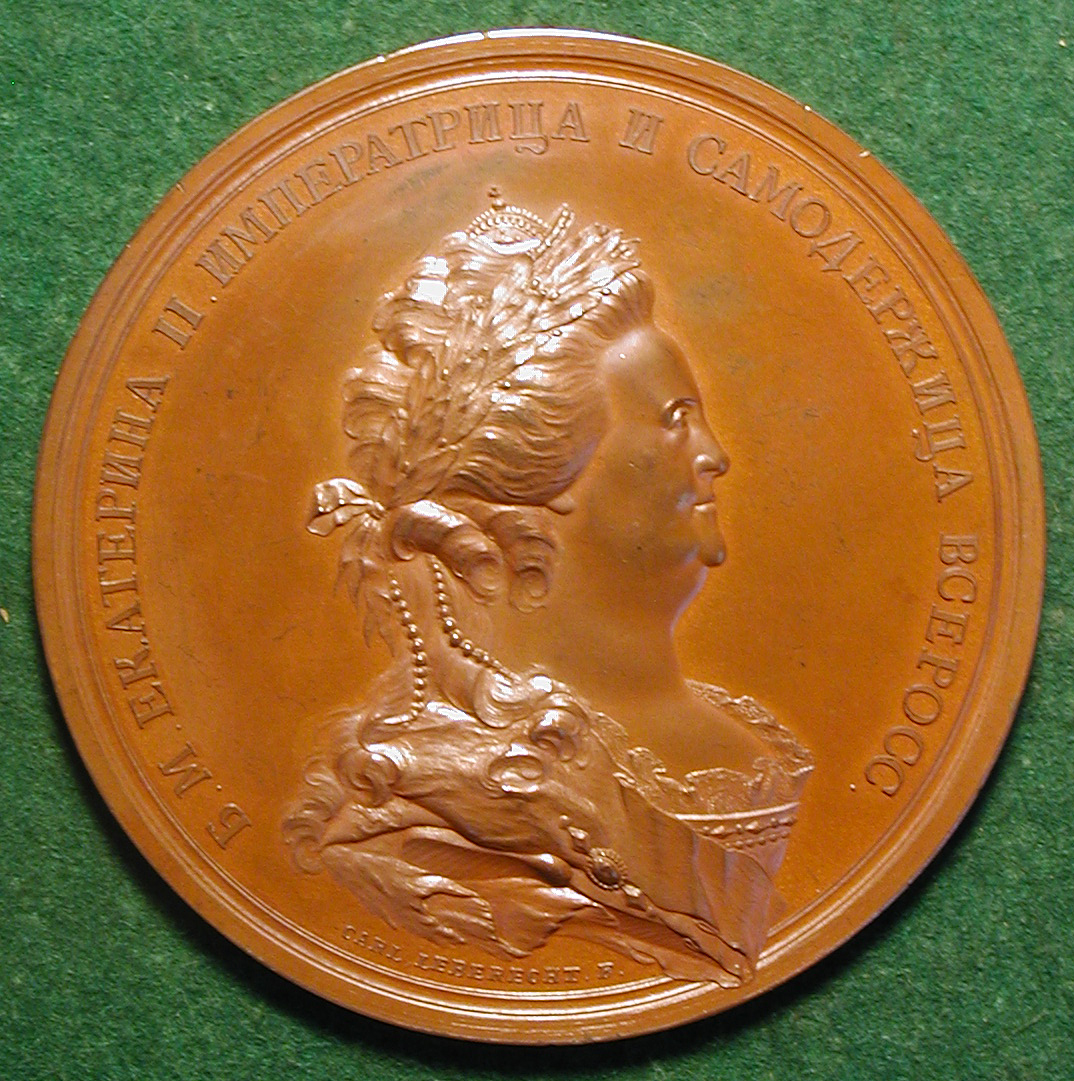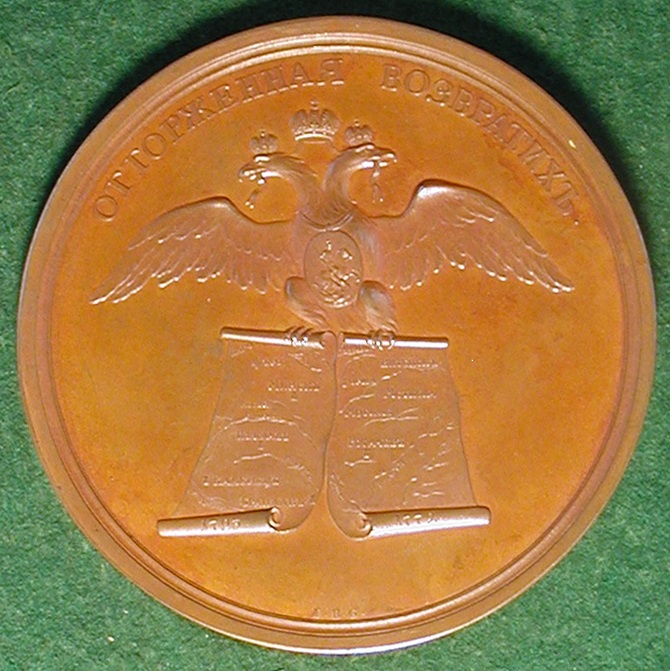

Historical and Commemorative
Medals
Collection of Benjamin Weiss


|
PARTITIONS OF POLAND IN 1772 AND 1793 LEBERECHT, Carl, and GASS, Johann Balthasar, Russia,
1773, Bronze, 79 mm The land in central Europe has been the scene of numerous border changes as the major powers vied to gain portions of its territory. In 16th and 17th century Europe, the largest and most populous country was the Polish-Lithuanian Commonwealth, then formally called the Kingdom of Poland and the Grand Duchy of Lithuania, and now known as Poland. This country was ethnically diverse and exhibited a relatively high degree of religious tolerance. Its neutrality during the Thirty Years’ War (1618-1648) also contributed to its enjoying several decades of prosperity. However, during the late18th century, because of its military and economic decline, it became reduced to that of a Russian protectorate. The major powers of Austria (under the Hapsburgs) and Prussia (under Frederick the Great) to the west and south, and the Russian Empire (under Catherine II) to the east, began to partition Poland. As the dates on the medal indicate this took place in two periods, one in 1772 and another in 1793. The medal was struck to commemorate this partitioning of Polish territories and its assumption by Russia. Stanis³aw II Augustus, the last monarch of the united Polish–Lithuanian Commonwealth appealed to the other European powers but to no avail. As can be seen from the LINK below in this satirical British cartoon published in 1772, England showed little interest in their plight. LINK to British cartoon |
|